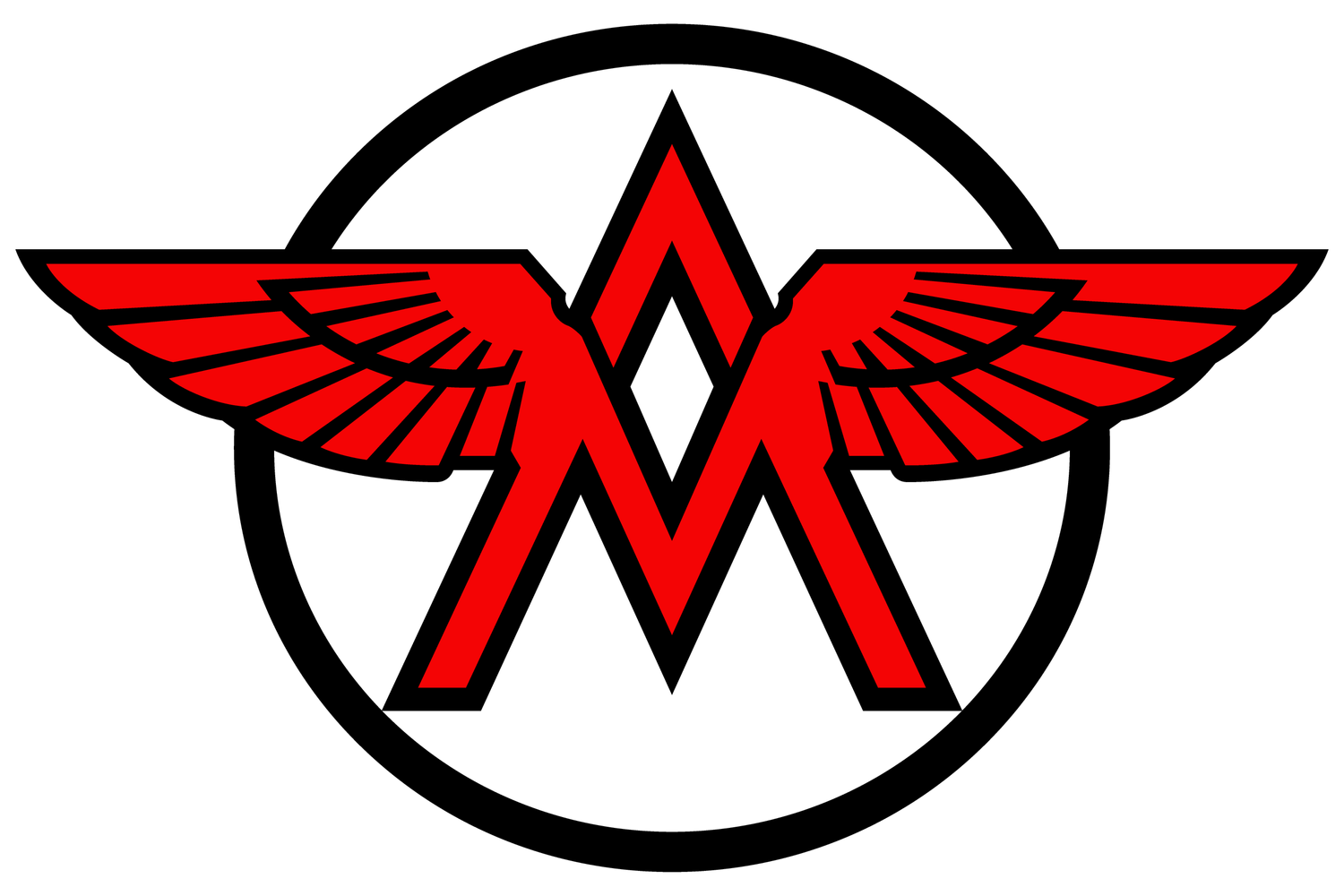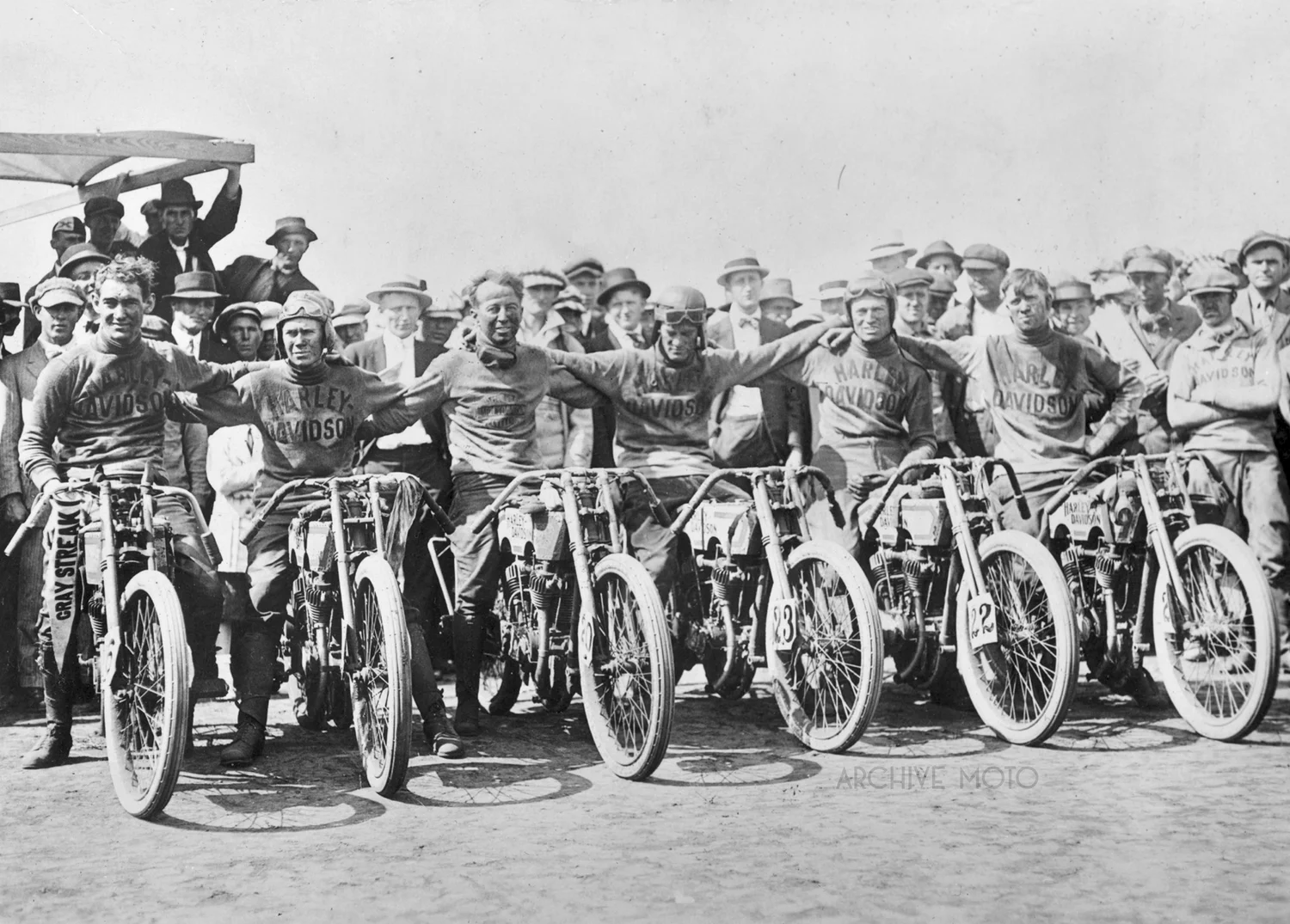Two founding father’s of American motorcycle racing, and two exceptional purebred Harley-Davidson racers in the country’s heartland just over 100 years ago. The men are, quite simply put, legends and their machines are as rare as they come. Maldwyn Jones stands in the rear of the photo in his homemade, padded leather helmet next to his brand new Merkel/Harley hybrid, while Ray Weishaar, the “Kansas Cyclone” straddles one of two new experimental factory 4-Valve racers at the Toledo 1/2 mile track on June 18, 1916.
Jones was a well established professional by 1916, however, waining factory support from Flying Merkel had driven the 25 year old Ohioan to leave the company with whom he had started his racing career back in 1910. Jones picked up a steady job in the U.S. Experimental Aviation Engines Department at McCook Field in Dayton, OH with the understanding that he could use his ample time off to continue racing. The visionary of the blossoming Harley-Davidson racing program, Bill Ottaway took note and made sure that the next jersey that jones pulled over bore the Milwaukee livery. The machine that you see next to Maldwyn is the only one ever built like it, a necessary accommodation for the union between Jones and Ottaway which paired Maldwyn’s specially constructed keystone chassis from his glory days at Merkel with a trimmed down, blanked off, 30.50ci single cylinder version of Ottaway’s recent experimentations with overhead valve setups. This race was the machine’s debut, and the first run of many that Maldwyn would make for Harley-Davidson for years to come.
Ray Weishaar, (pronounced wisher) was the same age as Jones, but hadn’t been on the national stage for quite as long. However, Weihsaar was a veteran of the Harley-Davidson factory racing program having been one of the few selected to pilot their experimental 11K series as a member of the first fully supported factory team for the Savannah 300 mile road race on Thanksgiving Day, 1914. Though similar, the machine that Weishaar was competing on was a full on factory creation, one of two new low slung, short keystone framed, 4 valve single designs that Ottaway had only recently began developing. Weishaar, along with fellow factory rider B.B. Bivins debuted the two factory 1/2 mile machines at races held in Roanoke, VA on April 24, 1916. Weishaar swept the event on his new nimble and lightening fast 4 valve racking up victories in the 1, 3, and 10 mile and only losing to Indian’s “Shorty” Matthews after both his and Bivin’s machine’s blew tires in the 15 mile race.
Though the iconic men and unique machines make the moment captured in this photo quite interesting, the pair unfortunately didn’t fair too well that summer day in 1916. Neither man took the top spot in any heat, though in fairness their competition did include names like Ray Creviston, Cleo Pineau, and Lee Taylor. Weishaar was poised to take the big 25 mile race until his engine failed, allowing Indian’s Lee Taylor to take the victory while Jones was just barely nosed out of second place. Pushing their little 30.50 singles to upwards of 55 mph around the dirt 1/2 mile Weishaar pulled off a second place finish to Indian’s Shorty Matthews in the 10 mile race, what would be the Milwaukee team's best finish of the day. Nonetheless, this image remains a remarkable and unique moment captured in the evolution of American motorcycle racing history featuring two of the greatest racers to have ever thrown over a leg and their remarkably special motorcycles.





